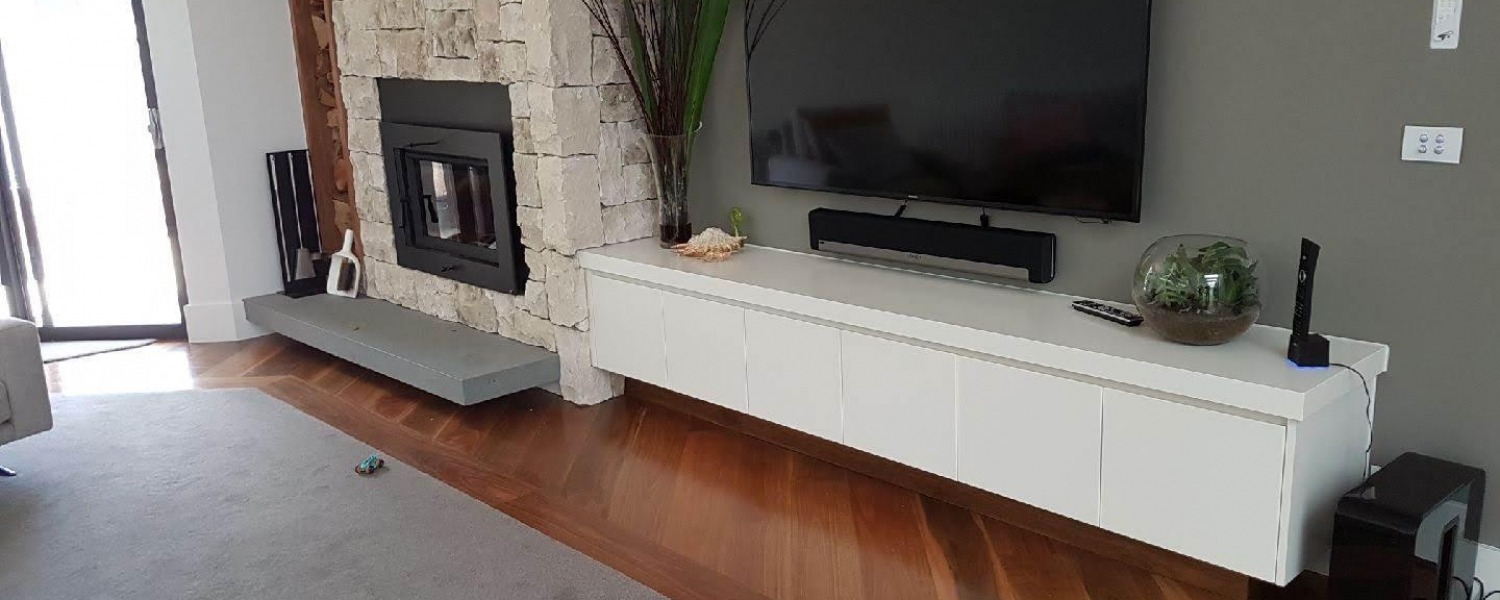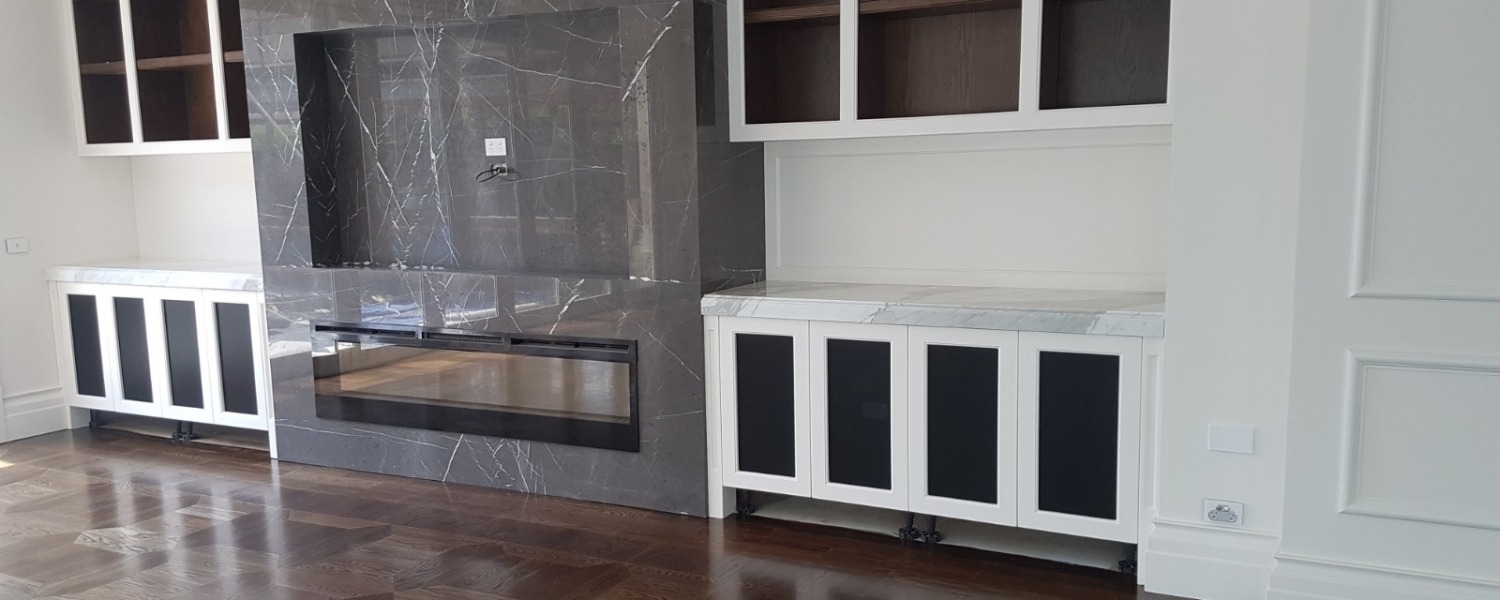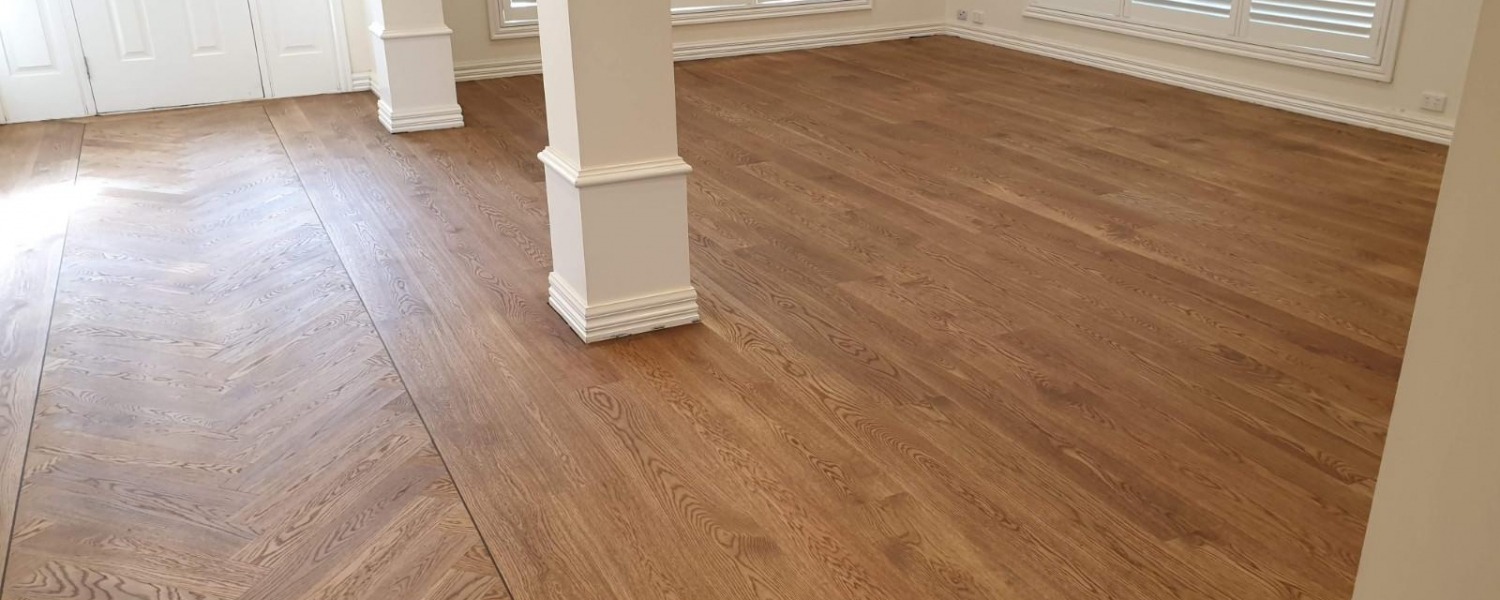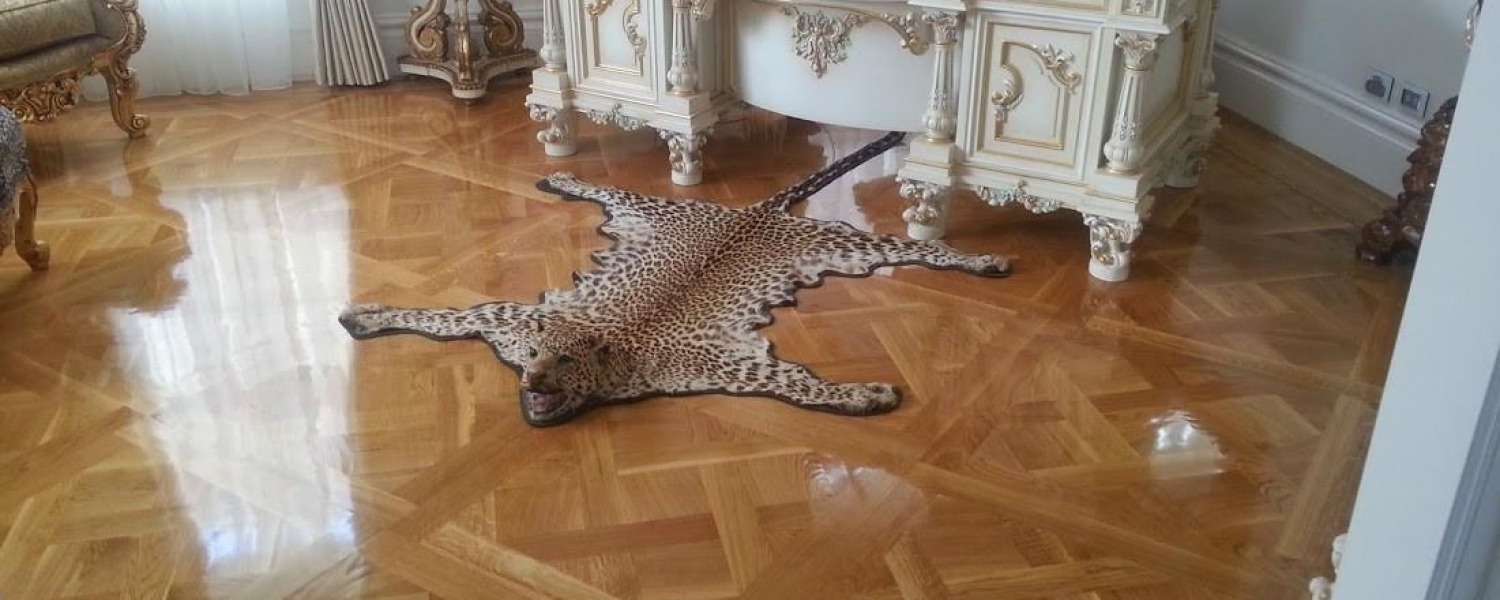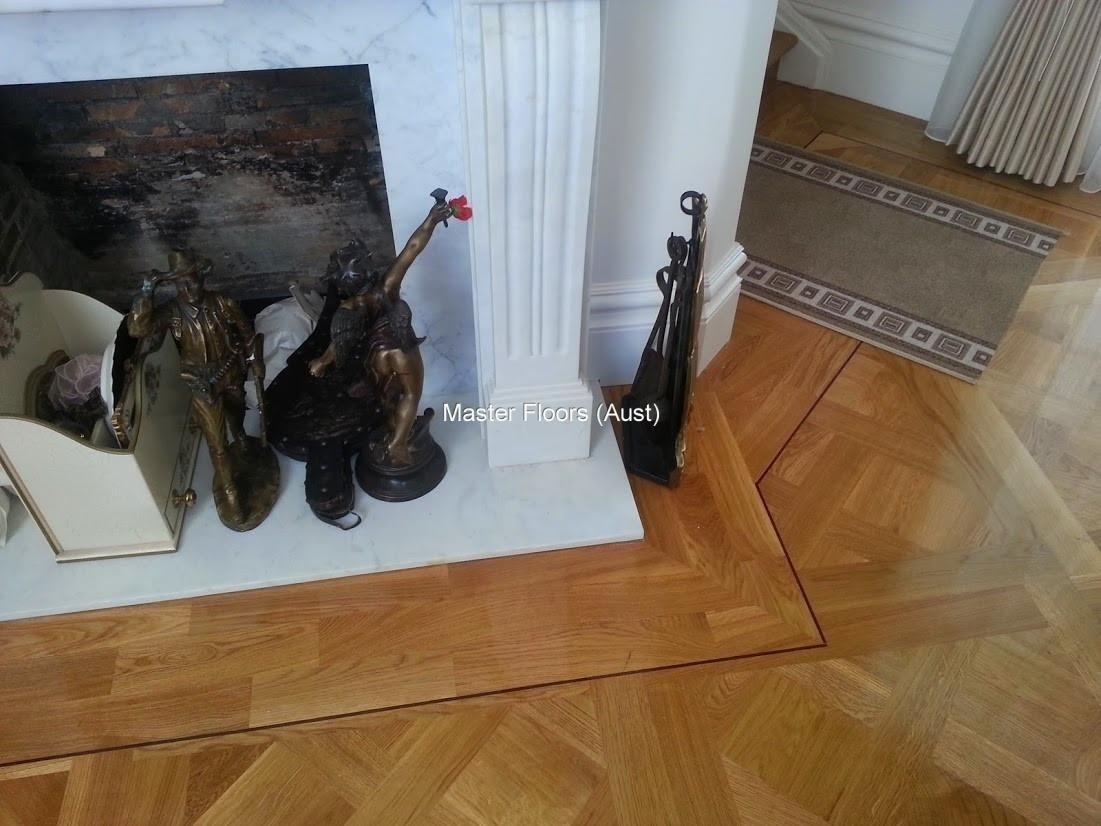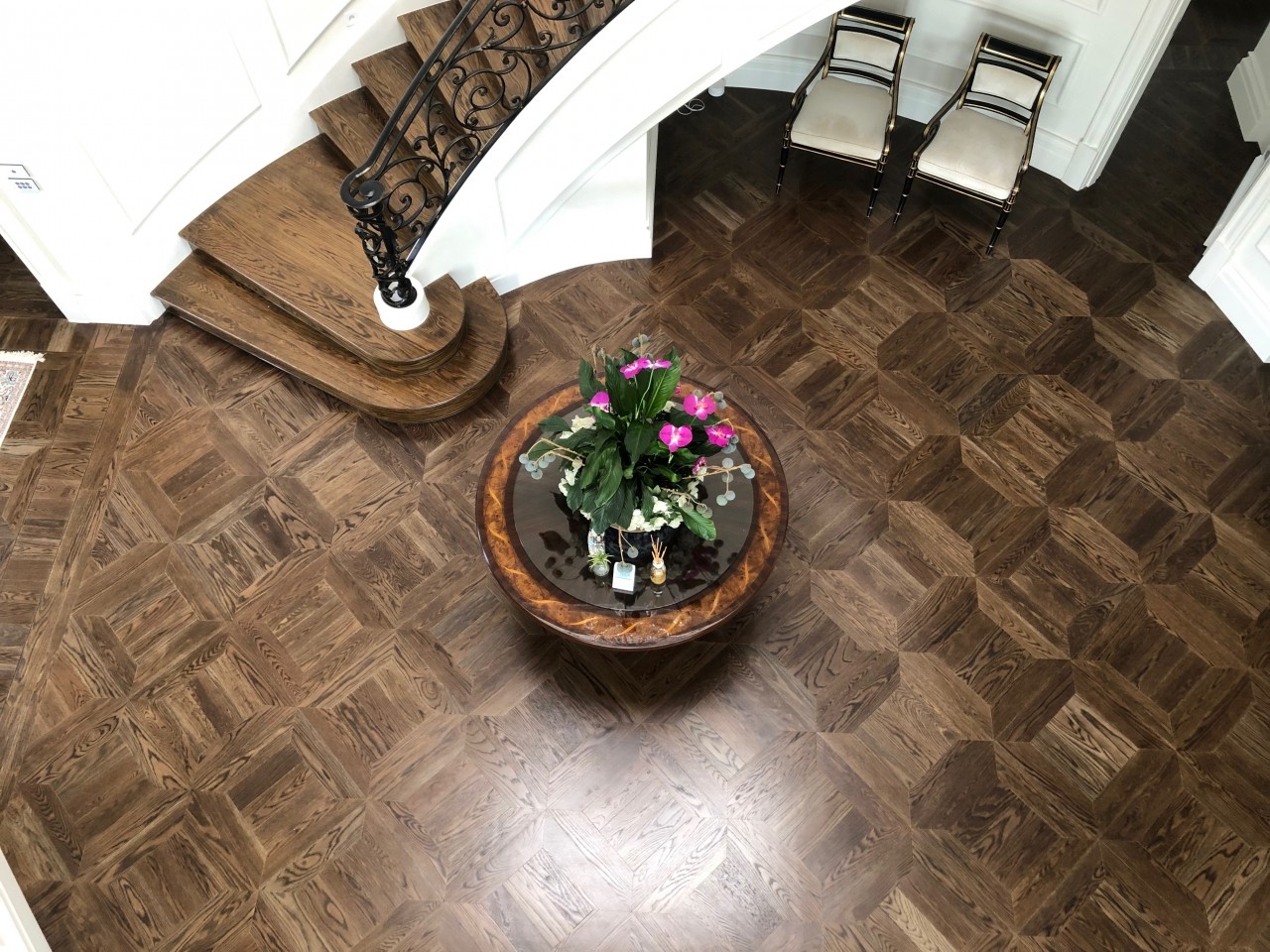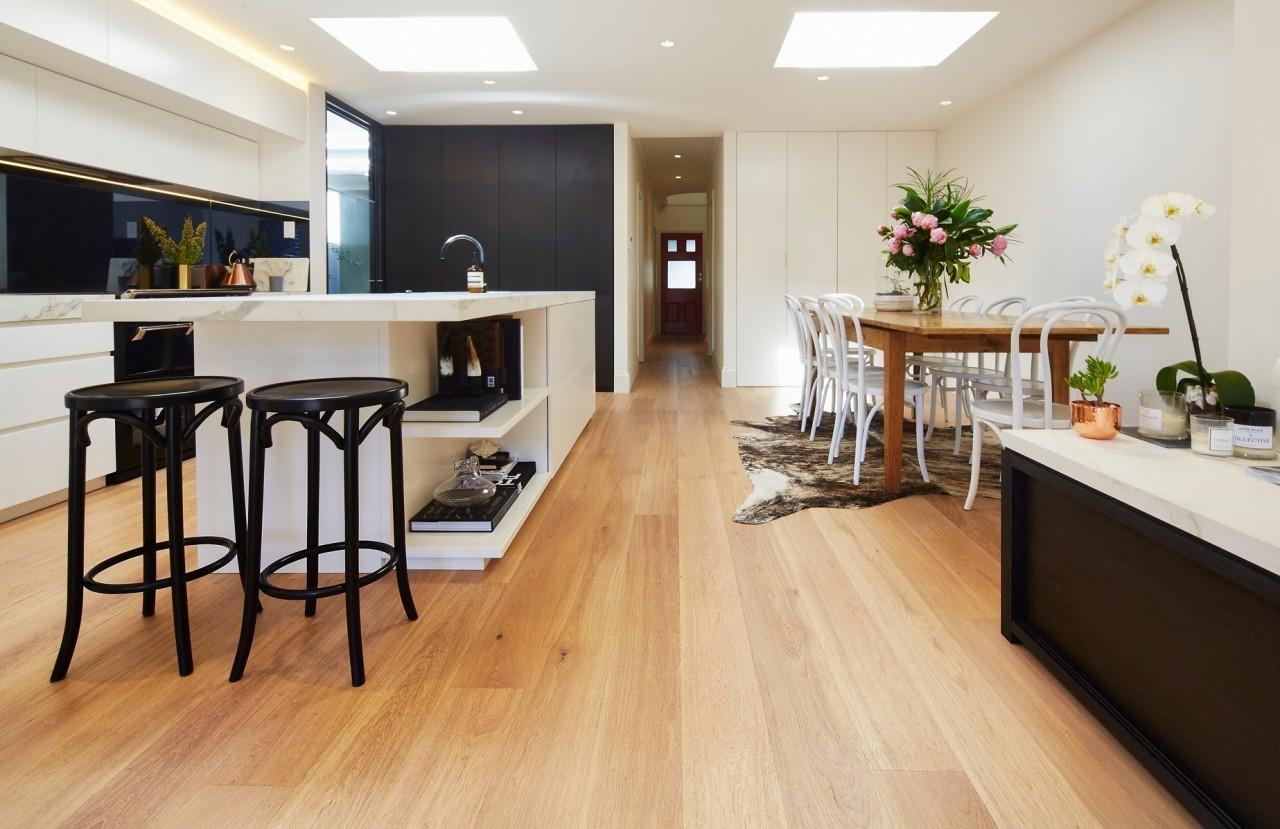- 03 9354 4717
- This email address is being protected from spambots. You need JavaScript enabled to view it.
- Mon - Fri 9:00:- 5:00 Sat 10:00 - 2:00
English Oak
Technical Information:
English Oak / European Oak - Timeless elegance and natural character makes it one of the most sort after timber in the world for a wide range of application one being timber flooring. European Oak flooring grain and texture and ability to take stain well is used to create inspiring projects.
| Botanical name: | Quercus spp |
| Origin: | United Kingdom and Europe |
| Trading names: | ENGLISH OAK - EUROPEAN OAK - FRENCH OAK |
| Heartwood: | varies from a pinkish grey to a rich reddish brownaries from a pinkish grey to a rich reddish brown |
| Sapwood: | Usually distinctively paler |
| Texture: | Fine and even |
| Grain: | Usually interlocked to varying degrees |
| Growth Rings | Not easily distinguished |
| General comments: | Material with considerably interlocked grain can distort severely in drying. Provided the grain is relatively straight it has good resistance to surface checking.Not easy to work.Not suitable for steam bending.It is very resistant to wear and has good resistance to splintering.High silica content.Its natural waxiness occasionally causes some adhesion problems with some highly solvent floor finishes but it is a very good base for paints and stains.Low in tannins and is much less inclined to stain than the eucalyptus when leached by rain. |
| Common Uses: | Paneling, cladding, and timber flooring. |
| Average Hardness Rating - Dry Hardwood: | 6 |
Notes:
Density: 'Green Density' (GD) is the density of the wood at the time the living tree is felled. It varies considerably with the season, weather conditions, the age of the tree and so on; the quoted figure must therefore be accepted as a guideline only and when accurate green density figures are required for, say, assessment of transport costs, it is advisable to carry out accurate determinations on the materials involved.
'Dry Density' or 'Air Dry Density' (ADD) is the average density of the wood at 12 per cent moisture content. It too varies with conditions of growth, climate and maturity of wood.
There are published figures for both Green Density and Air Dry Density of most commercial species.
The figures given above have been rounded to the nearest 50.
Hardness rating: The hardness rating of a timber species is measured by the Janka Test. This is a standard test which measures the penetration into the timber of a common load and projectile. The results relate to a hardness capacity of the material and are expressed in kN. This information is useful where the timber may be subject to potential damage from impacts e.g. a dance floor. There are 2 sets of published figures; one for 'Green' or freshly felled timber and one for seasoned timber - i.e. timber with a moisture content of 12%.
The ratings given here are:
Soft - less than 5.5
Moderate - 5.5 to 7.0
Hard - 7.1 to 10.0
Very Hard - greater than 10.0.
Lyctid susceptible sapwood: Only the sapwood of some hardwoods is susceptible to lyctid borer attack. No softwoods are susceptible to attack.
Natural durability ratings: The natural durability rating of a timber species is a rating of the timber's resistance to attack by wood destroying fungi and wood destroying insects. The sapwood of all timber species has poor resistance and so the natural durability rating applies only to the heartwood of a timber species. The rating is based on the testing of stakes and poles embedded in the ground and on expert opinion of historical performance. There are 2 sets of ratings: one for above ground use and one for in-ground contact use. The lower the number the higher the performance in terms of durability. This information is useful for specifying material for external or exposed applications.
View More Pages
Monticello Parquetry by Masterfloors
by MasterFloors
Timber Flooring Gallery - By Masterfloors
by MasterFloors
French Oak
in Technical Data | Technical Data
by MasterFloors
